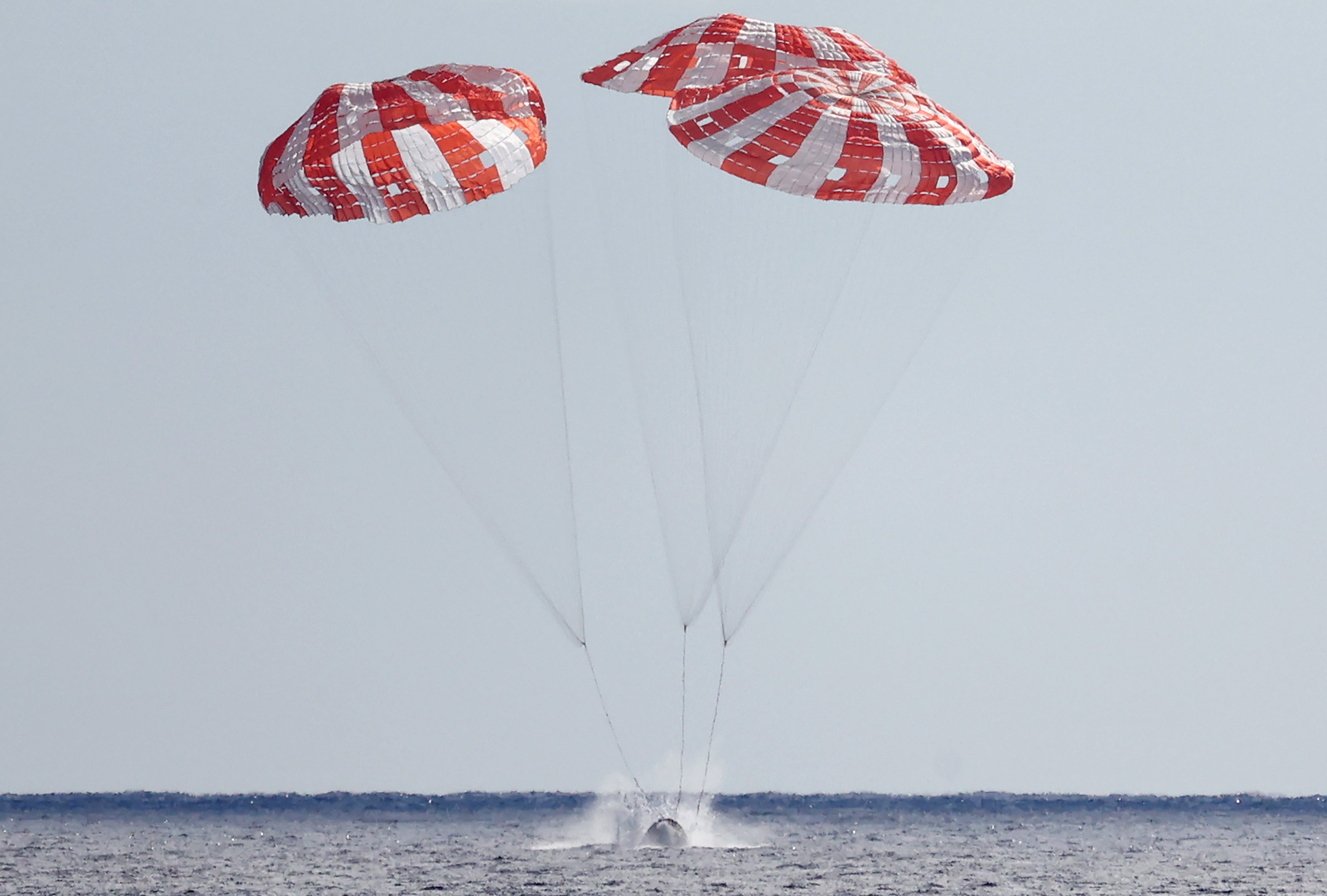Artemis: How Nasa astronauts will go to the Moon after spacecraft splashes down to Earth
Space agency hopes humans can back around the Moon, then onto it – and then further into the Solar System

An empty capsule has fallen in the sea, and Nasa is now closer than ever to sending humans back to the Moon.
The arrival of that Orion capsule marked the successful end of a successful test flight for the first Artemis mission, which left Earth on 16 November from the Kennedy Space Center. In the time since, it has journeyed towards Earth, floated over the surface, and then made itself back to its home planet.
“This has been an extraordinarily successful mission,” NASA administrator Bill Nelson told reporters. At every stage, Nasa has tracked the mission in detail, watching for any problems that could cause danger for a human crew.
Despite Nasa’s hailing of the mission as a success, it began with considerably difficulty. The space agency had to repeatedly push back its initial launch, because of technical problems and bad weather.
But once it began, it did indeed go entirely successfully, with the final arrival marking its last success. Nasa had considered the capsule’s arrival back on Earth as its most critical phase – a test of whether the capsule any inhabitants would survive their arrival back on Earth, in a way that is not possible to simulate on Earth.
“It is our priority-one objective,” Sarafin said at a briefing last week. “There is no arc-jet or aerothermal facility here on Earth capable of replicating hypersonic re-entry with a heat shield of this size.”
None of the first Artemis flight’s journey included human astronauts. Instead, it was carrying a simulated crew of three mannequins, who were fitted out with sensors that will give scientists a representation of the kind of experience that real humans will have.
But the success of this mission means that that pretend crew can now be swapped for a real one.
Early next year, Nasa intends to name its crew for the Artemis II mission. Then, as soon as 2024, that crew will take a flight around the Moon and back, though they won’t go down onto the surface, instead following a similar to that taken by the first test flight.
A few years after that, Nasa hopes to send its first humans back onto the lunar surface. That crew will include the first woman ever to land on the Moon, unless another space agency beats Nasa to it.
Those people will be the first people to walk on the lunar surface in decades. The last human journey to the Moon came exactly 50 years before Orion splashed down.
That Apollo 17 moon landing – on 11 December, 1972 – saw Gene Cernan and Harrison Schmitt walk around the lunar surface and then head back to Earth for the final time. They were the last of 12 Nasa astronauts – over six different Apollo missions – who represent the only people to have ever walked on another world.
Since then, a range of technical, political, funding and other issues have kept humanity from the Moon. But in recent years, both Nasa and other space agencies have revived efforts to go back there.
Nasa’s work to do so is known as the Artemis programme, and is named after the twin sister of Apollo. Its launch marked a major change for Nasa, which swapped back from a focus on the space shuttle and the International Space Station to try and get further into space once again.
This time, Nasa’s focus isn’t only on the lunar surface. Much of the appeal is in using it as a way to get elsewhere in the solar system – primarily to Mars – and the Artemis programme has continually stressed how Nasa is aiming to go back to the Moon and then beyond.
Join our commenting forum
Join thought-provoking conversations, follow other Independent readers and see their replies
Comments